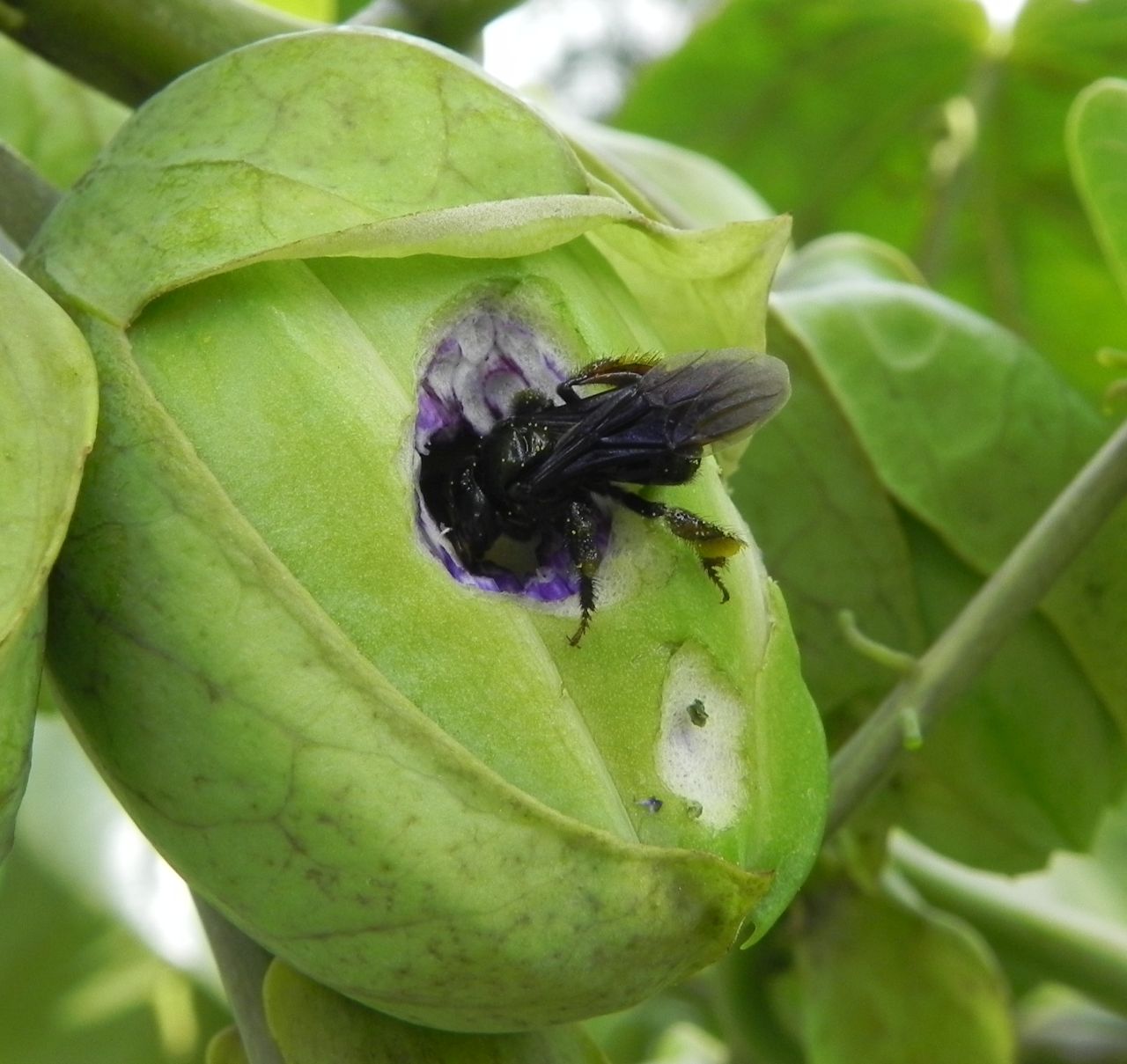Floral larceny by the stingless bee Trigona amalthea on granadilla (Passiflora ligularis Juss)
DOI:
https://doi.org/10.26786/1920-7603(2018)eightAbstract
Floral larceny (robbery and thievery of nectar and/or pollen) by some species of stingless bees in the genus Trigona has been long reported for several plant species, although the consequences for plant reproduction are unknown for many cultivated species. Here we i) describe the behavior of Trigona amalthea Olivier in relation to flowers of granadilla (Passiflora ligularis Juss), ii) provide a preliminary assessment of fruit set in six experimental plots, one exposed to attacks by T. amalthea only (infested) and the other plots without attacks from any species (control plots), and iii) discuss potential strategies for preventing damage from T. amalthea based on species traits such as foraging range. We observed T. amalthea chewing styles and stigmas of both flower buds and mature flowers while primarily extracting pollen. Destruction of floral structures prior to ovule fertilization probably accounts for the significant reduction in fruit set in the infested plot compared to control plots, although replicated infested plots are required for robust confirmation. Moreover, negative effects may be intensified by the small size of the experimental plot. Further studies are needed to assess impacts on commercial plantations, including investigations into a potential dilution effect in larger crop fields, as well as plant mechanisms to cope with consumer damage (resistance and tolerance). Legitimate pollinators were found to cover larger distances than T. amalthea. Therefore, locating crop fields at optimal distances from bee nesting habitat might reduce damage by balancing bee services and disservices.

Published
How to Cite
Issue
Section
License
Copyright (c) 2018 Catalina Gutiérrez-Chacón, Johanna Pantoja-Santacruz, Alexandra Maria Klein

This work is licensed under a Creative Commons Attribution 4.0 International License.
JPE is an open access journal which means that all content is freely available without charge to the user or his/her institution.
Authors who publish with this journal agree to the following terms:
1) Authors retain copyright and grant the journal right of first publication with the work simultaneously licensed under a Creative Commons Attribution License that allows others to share the work with an acknowledgement of the work's authorship and initial publication in this journal.
2) Authors are able to enter into separate, additional contractual arrangements for the non-exclusive distribution of the journal's published version of the work (e.g., post it to an institutional repository or publish it in a book), with an acknowledgement of its initial publication in this journal.
3) Authors are permitted and encouraged to post their work online (e.g., in institutional repositories or on their website) prior to and during the submission process, as it can lead to productive exchanges, as well as earlier and greater citation of published work (See The Effect of Open Access).
To assure a broader targeted audience, content will be included into databases (such as EBSCO) and directories (such as DOAJ).











